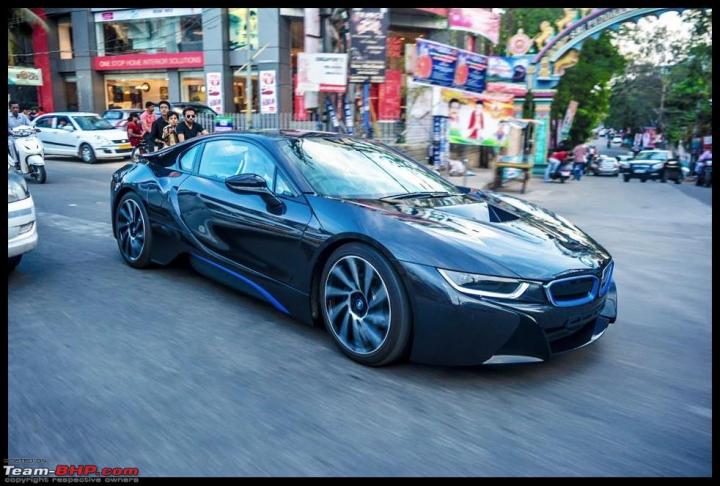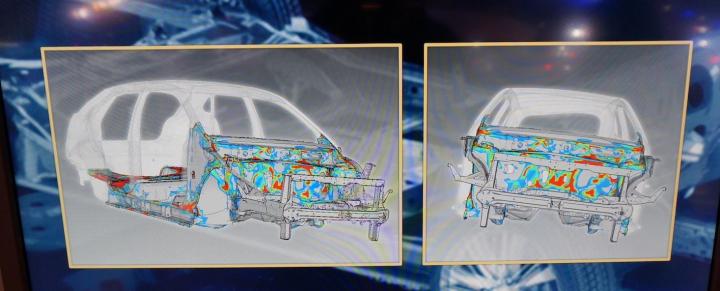News
New car, but old platform : Does it really matter?
Some current generation cars are using platforms that have actually been around for a while. My question to you is : does it really matter if the car is otherwise competent?
In most cases, the company wants to keep costs low and hence, doesn’t use or develop a new platform. In some cases, the old platform is actually competent enough to be used in new cars as well. Then, there are a few models whose platforms are actually better than their successors'. That said, one must keep in mind that a newer platform will generally be more advanced when it comes to safety, although there are many ways to ensure that an old platform is safe too (example = Polo & Etios). The newer platforms are generally lighter, which translates to better handling, braking and fuel efficiency. But this lightness could be at the expense of that feeling of solidity.
End of the day, we go by the manufacturer's word. There are ways they can lie about "all new" cars and we wouldn't have any way of knowing whether it's an old or new platform under the skin.
Here's a look at some cars that are still using old platforms.
Toyota Innova Crysta
The Innova Crysta appears to be using the same platform as its predecessor, albeit heavily reworked. The silhouette, positioning of the pillars, boot space (even with seats folded) etc. are all the same. See how similar the lines are.
Nissan Kicks
The Kicks used the same platform as the Renault Captur that was sold in India. This was the same platform that is under the old Duster!! And it doesn’t end there. This architecture was originally a Dacia platform that underpinned the old Logan. It is decades old.
Skoda Rapid
If ever there was an example of an aged platform still being competent, this is it. The Rapid uses Volkswagen's PQ25 platform which was introduced in 2008. This platform is a reworked version of the company’s PQ24 platform, which was first used in [B]1999[/B]. Despite being based on such an old platform, the Rapid is among the safest cars in its segment, the most solid and has the best ride & handling package.
Volkswagen Jetta
As mentioned earlier, some old platforms are actually better than those that underpin the next generation cars. Here's a look at one.
The Volkswagen Jetta is based on the old PQ35 platform. We much prefer its feel & drive over the newer MQB-based Octavia. The Jetta has superior ride & handling, and feels noticeably more solid. Just like the Rapid mentioned earlier, the old Jetta still outdoes its modern competitors when it comes to high speed composure.
BMW 5-Series
We see this in the luxury segments too. GTO is convinced that the G30 is based on the F10's platform. Just like the Innova example above, take a look at the pillars, silhouette, placement of the doors and profile - they are 99% identical. Sit in both the cars back to back and you'll be astonished at how everything is located at the "same" place.
- Tags:
- Indian
- Product Platform
- Platform
News
At least 1 Ford electric car to be based on VW's MEB platform
According to a media report, Ford will use Volkswagen's MEB platform for at least one high volume fully electric vehicle. The vehicle is expected to be launched in Europe in 2023.
Volkswagen is likely to supply battery packs and structural components, while Ford is expected to design the car at its facility in Cologne, Germany. Ford aims to deliver more than 6,00,000 cars based on the MEB platform over a six-year period starting 2023. The report also suggests that Ford could use the platform for a second model.
Volkswagen said that scaling the platform will reduce development costs for electric cars. In the next 10 years, Volkswagen intends to produce 15 million electric vehicles based on the MEB platform with 70 models using it across its brands. The products could include high volume small city cars, large limousines and camper vans.
Volkswagen is also expected to invest £ 2.1 billion into Argo AI, an autonomous company backed by Ford. Argo AI's first commercial rollout is scheduled for 2021.
Source - Autocar
News
Honda announces new global platform, consolidation of trims
Honda has announced new plans for the future. Some of these include the development of a new scalable architecture, grouping of products across regions and reduction in the number of trims.
The Japanese carmaker has announced a new platform for upcoming cars. Called the Honda Architecture, it is claimed to improve parts sharing and increase the efficiency of development. The first model to be released based on this is expected to be launched in 2020. The company also claimed that more of their future products would be based on this platform. One of the by-products of this development is that lesser time will be spent on the development of mass production models. Honda claims that by 2025, they expect to see a reduction of 30% in the total man-hours needed, which would be utilized for research and development for the future.
The company also announced plans for better utilization of global production facilities. In 2018, excluding China, Honda had a capacity utilization of 90%. The company is aiming to run its plants at full capacity by 2020. The company also expects a 10% reduction of costs of global production by 2025. Honda also plans to reduce the total number of variants in each model and simplify the production at each of their plants.
In terms of electrification, Honda will focus on hybrid electric vehicles. These include plans to incorporate its 2-motor hybrid system across a wider model line-up as well as development of a smaller hybrid system capable of use on smaller vehicles. The company expects a 25% reduction of cost in their hybrid system, dubbed as the i-MMD, by 2022.
News
All upcoming BMW cars to get space for EV / Hybrid batteries
Last year, BMW announced that it would be developing a flexible architecture that would support fully-electric or plug-in hybrid systems along with internal combustion engines. Now, a media report reveals that the carmaker plans to leave space for batteries in all the upcoming models given the uncertain rules and regulations and demand for electric vehicles (EV).
BMW cars based on the new platform will have blank underfloor space for battery packs. The flat battery packs would come with scalable sizes. The Bavarian carmaker would also offer different capacity batteries depending on the model and trim levels. The performance-oriented cars in the company line-up would get a superior battery pack. These battery packs would also be incorporated in SUVs in the future.
At present, BMW has 2 platforms - CLAR for rear-wheel-drive cars like the 5-series, and FAAR for the front-wheel-drive cars. Both these platforms support a number of engines as well as an option for all-wheel drive powertrains. However, the company is uncertain of the future demand for electric and conventional automobiles. To play it safe, the carmaker has decided to develop a modular platform which would support both powertrain options. Developing separate platforms for these cars would be more complicated and it could cause capacity issues - under or over utilisation of one platform.
The new BMW platform is claimed to offer up to 100 km of range for plug-in hybrid models and up to 700 km for fully electric cars.
Source: Inside EVs
News
Mahindra, Ford to co-develop compact & midsize SUV, EV
The Mahindra Group and Ford Motor Company have signed five new memoranda of understanding (MoU) to develop two new SUVs and a small electric vehicle (EV). Earlier, the two carmakers had announced a strategic partnership to develop new products for India and other emerging markets.
As part of the new initiative, Mahindra and Ford will jointly develop a mid-size, C-segment SUV that will be built on a Mahindra platform and will be sold independently by the two brands. The companies will also be evaluating a compact SUV and an EV. Moreover, Mahindra-sourced engines will power Ford’s future products in India. The two carmakers have also announced plans to co-develop a suite of connected car solutions.
It is a mutually beneficial alliance, as Mahindra will be looking to leverage Ford's global reach, while Ford will benefit from Mahindra's scale and operation model in India. Teams from both companies will work together for a period of atleast three years and will collaborate to address future mobility requirements of the marketplace.
News
Rumour: Ford C-segment SUV to be based on Mahindra platform
In September 2017, Mahindra and Ford had announced a strategic partnership for the development of new products. A recent media report suggests that Ford is planning a C-segment SUV that will be positioned between the EcoSport and Endeavour. This new SUV will likely be based on the next-generation Mahindra XUV500 (codenamed: W601) platform.
In return, Mahindra will gain access to Ford's B562 platform for a future electric sedan. Besides, there have been reports of Mahindra co-developing an electric vehicle (EV) based on the Ford Aspire. Ford's first EV is likely to be launched sometime in 2019.
Reports suggest that Mahindra has a 10-12% lower cost structure than Ford. The partnership between two brands is expected to reduce development costs and the time required to launch new products. However, neither Ford nor Mahindra have yet confirmed these reports.
Source: ET Auto
News
Maruti Suzuki to reduce number of product platforms
Maruti Suzuki plans to reduce the number of product platforms at its disposal in order to streamline the R&D process, cut costs and speed up the development of new models. According to Maruti Suzuki's executive director of engineering and the man behind the Vitara Brezza - C.V. Raman, the plan is to reduce the number of platforms down to 3 or 4. Maruti Suzuki currently offers 16 models, based on 8 platforms, retailed through either Maruti's regular dealership network or the NEXA premium showroom chain.
Automakers today are taking a modular approach to the development of platforms world over, in order to get new products out faster while being cost effective. These platforms have to be flexible to cater to a variety of customer needs, while complying with varying emission and safety norms.
Maruti's platform streamlining will be a slow process as the supplier network will have to be prepared to offer a large number of parts that meet specific quality standards.
C.V. Raman also stated that Maruti's development cycle will change, with a new-gen model expected every six years. Over the next five years, the existing product line-up will be refurbished and offered as new-generation models. The consolidated platforms will primarily target compact car segments in global markets.
Source: Livemint
- Tags:
- Indian
- Product Platform











_52.jpg)




